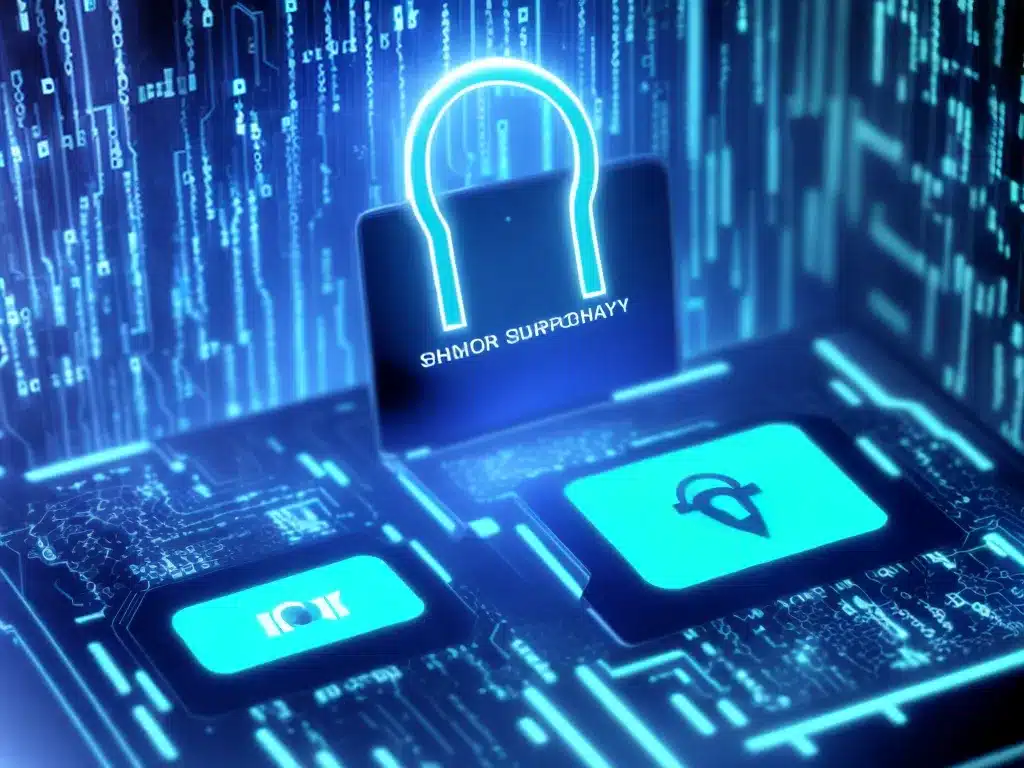
Introduction
As technology becomes more integrated into supply chain operations, organizations must take steps to secure their supply chains from cyber threats. A cyber attack on a supplier or logistics provider can halt production and shipments, leading to significant financial losses and damage to the company’s reputation. In this article, I will provide an in-depth look at best practices for securing supply chains from cyber risks.
Assess Your Supply Chain Cyber Risks
Before implementing cybersecurity measures, you need to understand where your supply chain is vulnerable. Here are some important considerations:
-
Map out your entire supply chain network – Document all suppliers, logistics providers, systems, and data flows. This gives you visibility into potential vulnerabilities.
-
Identify your critical systems and data – Know which systems and data are most vital to your operations and pose the greatest cyber risk if compromised. Focus protection efforts here first.
-
Perform cyber risk assessments – Conduct thorough assessments to find potential weaknesses in supplier cybersecurity controls that could impact your business.
-
Classify risk levels of suppliers – Categorize suppliers based on the criticality of parts/services they provide and their level of cybersecurity maturity. Higher risk suppliers need priority attention.
Implement Strong Access Controls
Access controls are key to securing your supply chain from unauthorized access. Best practices include:
-
Enforce principle of least privilege – Only allow access to the systems and data necessary for a user’s role. Limit admin and root access.
-
Institute strong password policies – Require complex passwords and prompt password changes. Enforce password vaulting.
-
Implement multi-factor authentication (MFA) – MFA adds an extra layer of security by requiring a second form of identity verification.
-
Monitor user activity – Watch for suspicious access attempts and unusual activity that could signal a cyber attack.
Protect Your Systems and Data
Safeguarding your organization’s systems and data is critical for supply chain security. Important measures include:
-
Keep software up-to-date – Regularly update operating systems, applications, and security software to address vulnerabilities.
-
Install firewalls and anti-malware – Use firewalls to control network access. Deploy anti-virus and anti-malware tools to detect and block cyber threats.
-
Encrypt sensitive data – Encryption converts data into unreadable code that requires a decryption key to access. It protects data if compromised.
-
Back up data regularly – Maintain regular backups of critical data and systems. This enables restoration after an attack.
Demand Security from Suppliers
Your suppliers and logistics providers can introduce cyber risks into your supply chain if their defenses are lacking. Take these steps to mitigate third-party risks:
-
Set minimum cybersecurity standards – Establish baseline requirements for suppliers, such as password policies, physical security, and use of firewalls and encryption.
-
Include cybersecurity in contracts – Legally bind suppliers to your security standards through contractual clauses, representations, and warranties.
-
Audit supplier security controls – Regularly review and inspect supplier cybersecurity measures to verify compliance and effectiveness.
-
Provide security training – Educate suppliers on cyber threats in the supply chain and your security expectations and procedures.
Monitor Threats and Respond Quickly
Vigilance and rapid response are key to minimizing the impact of a cyber attack. Key practices include:
-
Implement intrusion detection and monitoring – Use tools to monitor networks and systems and swiftly detect potential cyber intrusions.
-
Establish an incident response plan – Have a plan to rapidly respond to cyber attacks to isolate threats and restore operations.
-
Conduct response simulations – Run practice drills to test and improve the effectiveness of your response plan.
-
Share threat data with partners – Exchange cyber threat intelligence with suppliers and government agencies to improve warning of emerging risks.
Conclusion
Cyber attacks on supply chains are rising, making it crucial to implement robust cyber defenses across supplier networks. By assessing risks, controlling access, protecting data, overseeing suppliers, monitoring threats, and planning responses, companies can greatly enhance the cyber resilience of their supply chains. The vigilant organization will reap significant benefits in risk reduction, incident preparedness, and protection of corporate reputation.












